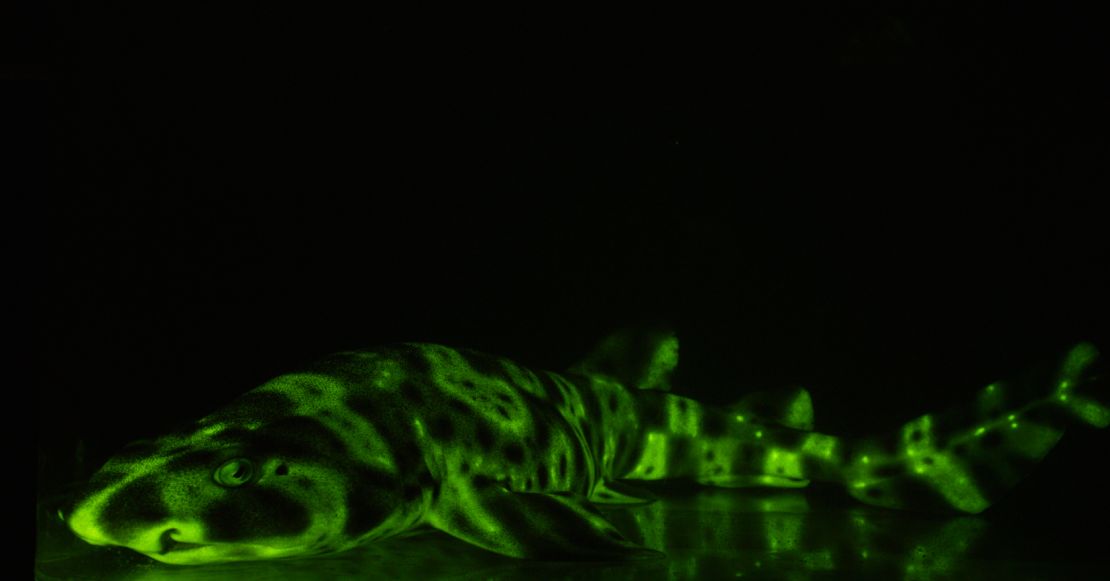Glowing green sharks swim in the dark depths of the ocean thanks to an entirely different kind of biofluorescence than other marine animals.
Previously, researchers knew that some shark species produce a green glow that is only visible to other sharks.
Researchers discovered that previously unknown small-molecule metabolites are the cause of the green glow. The glow helps sharks identify each other and even fight against infection on a microbial level.
The study, focusing on swell sharks and chain catsharks, published Thursday in the journal iScience.
“Studying biofluorescence in the ocean is like a constantly evolving mystery novel, with new clues being provided as we move the research forward,” says David Gruber, study author and professor at City University in New York.
“After we first reported that swell sharks were biofluorescent, my collaborators and I decided to dive deeper into this topic. We wanted to learn more about what their biofluorescence might mean to them.”’
The two types of sharks in the study have two skin tones, light and dark. During their research, Gruber and his colleagues realized the molecule responsible for the fluorescence was only in the light skin.
“The exciting part of this study is the description of an entirely new form of marine biofluorescence from sharks–one that is based on brominated tryptophan-kynurenine small-molecule metabolites,” Gruber said.

The metabolites responsible for the fluorescence are active in the light skin the same way that similar metabolites activate in the central nervous and immune systems in other animals.
This is completely different from other bioluminescent ocean creatures like jellyfish and coral. They use green fluorescent proteins to turn blue light in the ocean into other colors.
“It’s a completely different system for them to see each other that other animals cannot necessarily tap into. They have a completely different view of the world that they’re in because of these biofluorescent properties that their skin exhibits and that their eyes can detect,” Jason Crawford, study author and professor at Yale University.. “Imagine if I were bright green, but only you could see me as being bright green, but others could not.”
The metabolites in the sharks also show antimicrobial properties, the researchers said.
“These catsharks live on the ocean bottom, yet we don’t see any biofouling or growth, so this could help explain yet another amazing feature of shark skin,” Gruber said. “This study opens new questions related to potential function of biofluorescence in central nervous system signaling, resilience to microbial infections, and photoprotection.”
Studying the bioluminescent techniques of marine animals could lead to new imaging techniques.
“If you can harness the abilities that marine animals have to make light, you can generate molecular systems for imaging in the lab or in medicine. Imaging is an incredibly important biomedical objective that these types of systems could help to propel into the future,” Crawford said.
“Sharks are wonderful animals that have been around for over 400 million years. Sharks continually fascinate humans, and they hold so many mysteries and superpowers,” Gruber said. “This study highlights yet another mystery of sharks, and it is my hope that this inspires us to learn more about their secrets and work to better protect them.”









